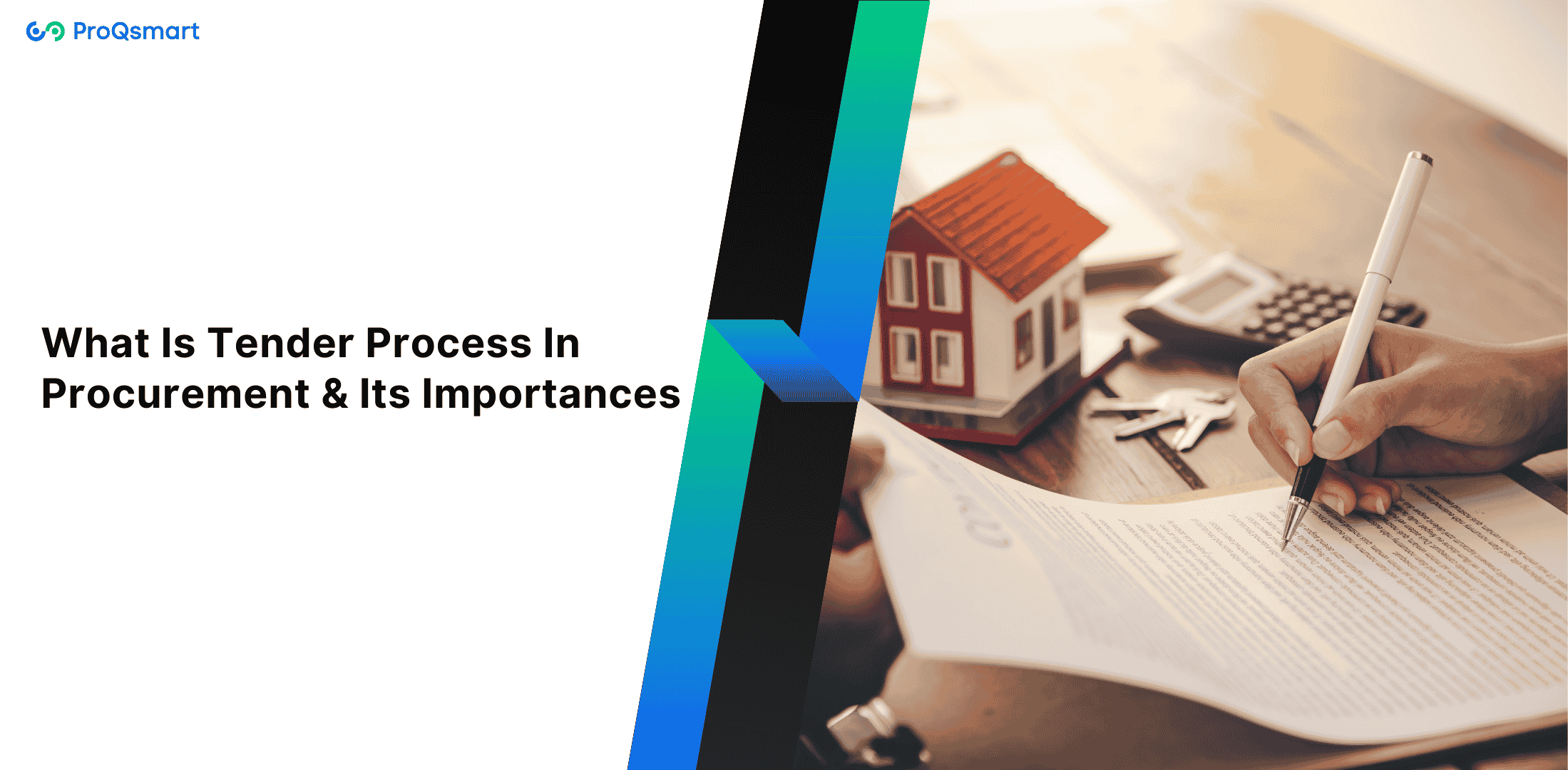In today’s hyper-competitive business environment, procurement professionals are constantly seeking ways to gain a strategic edge. One of the most powerful tools at their disposal is a well-executed tender process—a cornerstone of effective procurement that drives transparency, efficiency, and value.
For organizations navigating complex supply chains, particularly in dynamic markets like the US, UK, Singapore, UAE and Saudi Arabia mastering the tender process is no longer optional; it’s a necessity. It ensures compliance, fosters supplier engagement, and unlocks opportunities for cost savings and innovation.
This article explores the key stages of the tender process, , providing actionable insights to help procurement teams, business leaders, and vendors optimize their approach. Whether your goal is to streamline operations, strengthen supplier relationships, or achieve long-term sustainability, a deep understanding of these stages is the foundation for transforming your procurement strategy. By mastering the tender process, you can drive efficiency, foster collaboration, and unlock greater value for your organization.
Key Takeaways
The tender process involves a multitude of actors such as buyers, bidders, and civil society stakeholders. Each one is equally important and each person equally critical to success through open communication and teamwork.
Buyers must clearly articulate their requirements and use defined criteria to evaluate bids, whereas bidders need to prepare competitive offers and thoroughly understand tender specifications to increase their chances of winning contracts.
Stakeholders are key players in the decision-making process. Their engagement, whether from internal departments or external partners, is critical at every stage of the tender lifecycle.
Adopting technology, such as a tender management system, increases the efficiency of workflows and provides greater collaboration. This method creates more transparency and aids in addressing issues like complexity, supplier fatigue and bias in tender management.
What is Tendering?
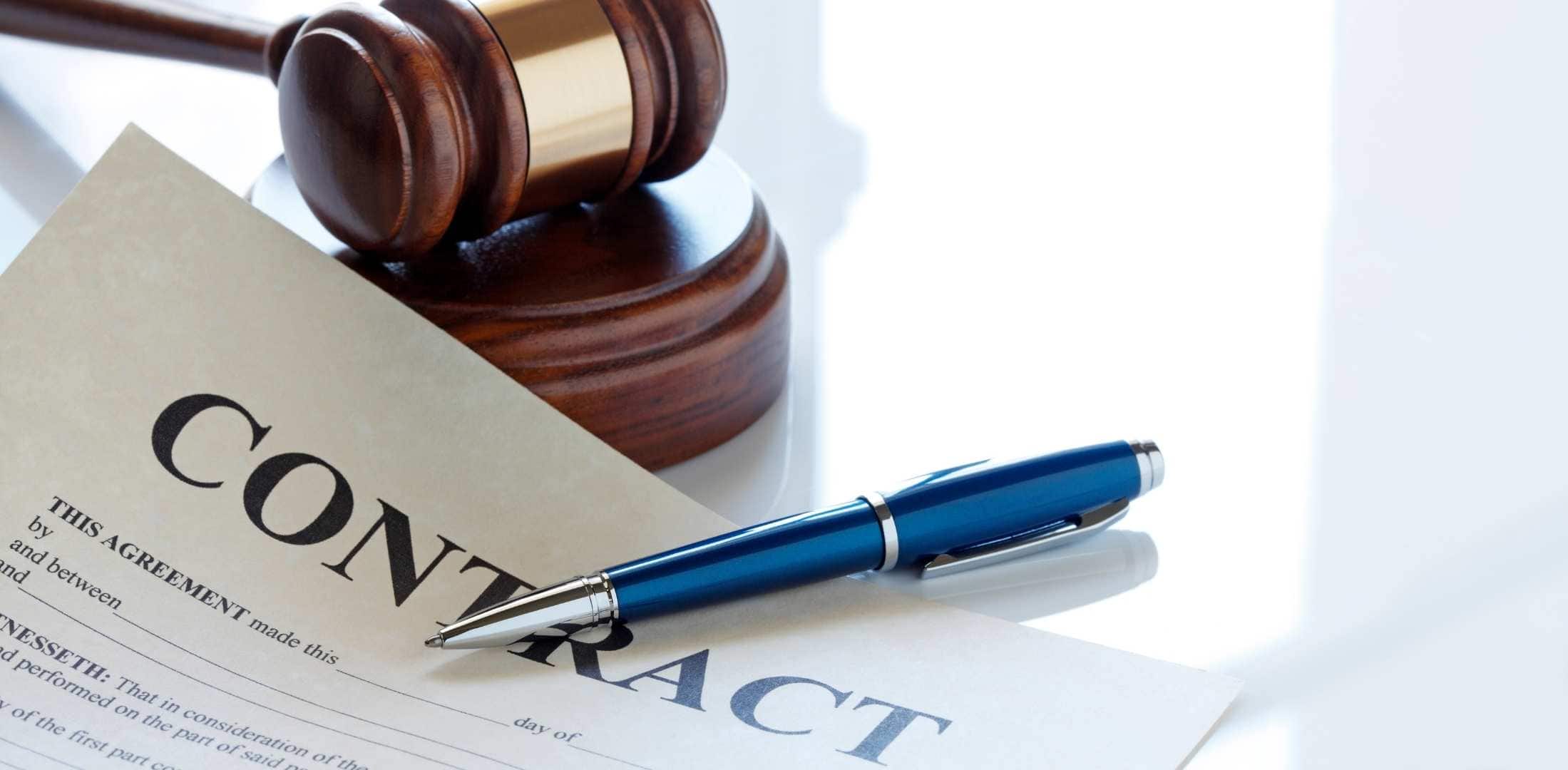
Tendering is a highly formal and structured process that organizations use to solicit bids for goods, services, or projects. By issuing an invitation to suppliers, organizations encourage them to submit detailed proposals, offers, or bids. This process fosters a thorough evaluation of potential vendors, ensuring alignment with organizational needs and goals.
Tenders are designed to promote competitive pricing and identify the most strategic partners for long-term collaboration. They provide a clear definition of project requirements and expectations, enabling qualified suppliers to understand the scope and submit accurate, relevant proposals.
For industries like, manufacturing, construction, interior fit-out and hospitality chains, this approach not only drives cost-effectiveness but also enhances transparency, supplier engagement, and compliance with internal and regulatory standards. Whether you’re procuring specialized services, sourcing materials, or managing large-scale projects, a well-executed tender process is key to achieving optimal outcomes.
Purpose of the Tender Process
The stated main objective of the tendering process is to save money by securing the lowest cost bids. By opening the process to numerous suppliers to compete, organizations have the ability to evaluate a wide range of options and identify the most cost-effective solution.
On top of that, tendering improves procurement efficiency by expediting decision-making through a competitive process. It’s an essential guardrail to help prevent corruption and waste. Moreover, the transparent nature of tendering creates a level of accountability and fairness, allowing for the best supplier to be chosen.
Thus, this transparency is essential to upholding fairness and accountability in procurement processes.
Key Characteristics of Tendering in Procurement
Tendering is one of the most rigid processes around, dictated by strict procedures, deadlines, and timelines. Specific and transparent evaluation criteria in tender documents are key. They also lead the selection process and make certain that every bid is evaluated equitably.
This competitive environment created by tendering pushes suppliers to put forth their best proposal, spurring innovation and cost savings. Through fostering competition, tendering helps achieve these goals not just for the procuring organization but raises the bar for the entire industry.
Participants in Tendering
In the tendering process, participants such as buyers, bidders, and the public play complementary roles, essential to achieving the right results at the right price within the structured procurement process.
Buyers in the Tender Process
Buyers may be any type of organization or individual looking to purchase goods or services via the tender process. Instead, they score bids against predefined criteria such as price, quality and supplier track record.
For example, a construction firm would want to solicit bids for construction materials, focusing on the cheapest yet most durable option. Unambiguous articulation of their needs is critical, making sure that bidders are able to customize proposals to address precise needs.
This clarity also avoids confusion and helps ensure a level playing field, increasing the competition and resulting in the best procurement results.
Bidders and Their Roles
Bidders, or suppliers, play a critical role in the tender process by responding to invitations with detailed proposals. Crafting competitive bids is essential for their success in securing contracts.
For example, a manufacturing company bidding on a production contract must showcase its technical expertise, production capacity, and ability to meet quality standards. Understanding the tender specifications is crucial, as it allows bidders to align their proposals with the buyer’s exact requirements.
By tailoring their bids to address the buyer’s needs—whether it’s cost-efficiency, scalability, or compliance with industry standards—bidders significantly increase their chances of winning the contract.
Stakeholders and Their Influence
Key stakeholders are internal team members, regulatory agencies, and external partners. Their reach and power can make or break decisions, procurement and outcomes.
By engaging stakeholders early, you can make sure their concerns and insights are addressed, which can go a long way toward smoothing the process.
For instance, getting a legal team involved early on in the process might allow you to avoid costly compliance issues down the road.
Tender Process Explained
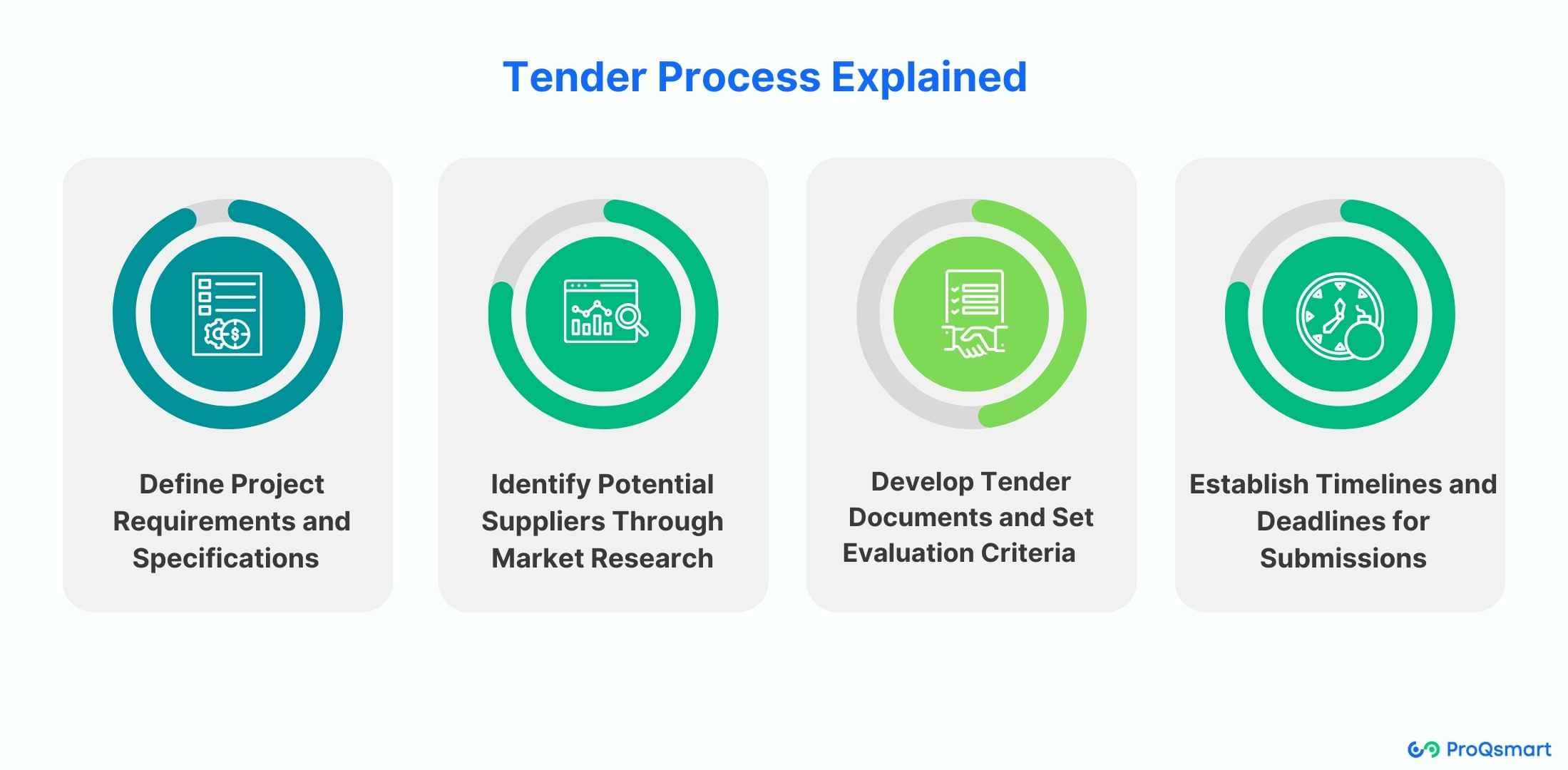
The tender life cycle includes various phases, all crucial to the integrity and success of the government’s procurement process and effective procurement procedures.
Define Project Requirements and Specifications
The first step in preparing for a tender is to clearly define the project’s scope, objectives, and requirements. This involves understanding the organization’s needs, budget constraints, and desired outcomes.
A well-crafted Statement of Work (SOW) or Scope of Requirements document is essential. It should outline deliverables, timelines, quality standards, and any technical or regulatory requirements.
Clarity at this stage ensures that all stakeholders are aligned and that suppliers have a precise understanding of what is expected.
Develop Tender Documents and Set Evaluation Criteria
Prepare comprehensive tender documents, including the Request for Proposal (RFP), Invitation to Tender (ITT), or Request for Quotation (RFQ). These documents should provide detailed information about the project, submission guidelines, and evaluation criteria.
Evaluation criteria should be objective, measurable, and aligned with the project’s goals. Common criteria include cost, quality, compliance, sustainability, and risk management.
Clear and thorough documentation ensures that all bidders are on the same page, reducing the likelihood of misunderstandings or non-compliant submissions.
Establish Timelines and Deadlines for Submissions
Set realistic timelines for each stage of the tender process, including the release of documents, bid submission, evaluation, and contract award.
Communicate these deadlines clearly to all stakeholders and suppliers. Adhering to a structured timeline keeps the process on track and ensures fairness.
Allow sufficient time for suppliers to prepare their bids, as rushed submissions can lead to lower-quality proposals.
Types of Tenders in Procurement
Type of Tender | Description |
Open Tender | Open to all qualified bidders. |
Restricted | Limited to pre-selected suppliers. |
Negotiated | Direct negotiations with chosen suppliers. |
Challenges in Tender Management
Time-Consuming Processes
- One of the most significant challenges in tender management is the time-consuming nature of compiling tender responses. Teams can spend up to 20% of their time simply gathering the necessary information, which can stretch over days or even weeks.
- This not only delays the process but also diverts resources from other critical tasks, creating inefficiencies across the organization. The manual effort involved in collecting and organizing data often leads to bottlenecks, slowing down the entire procurement cycle.
Supplier Fatigue
- The lengthy timelines and extensive requirements of tenders can be draining for suppliers. Many suppliers spend weeks or even months preparing bids, often without clear communication or feedback from buyers.
- This lack of engagement can lead to frustration and disengagement, damaging relationships and reducing supplier enthusiasm for future opportunities. Over time, this can result in a smaller pool of willing participants, limiting competition and innovation.
Bias and Fairness Issues
- Bias and fairness are persistent challenges in tender management. In many cases, contract terms are non-negotiable, particularly in technical proposals, which can create perceptions of favoritism or unfairness.
- Without a transparent and objective evaluation framework, it becomes difficult to select the most qualified suppliers. This lack of transparency can compromise the integrity of the process and lead to disputes or dissatisfaction among bidders.
Lack of Flexibility
- Rigid tender requirements can hinder innovation and limit suppliers’ ability to propose creative solutions. When criteria are too strict, capable suppliers may be excluded, reducing competition and limiting the potential for value creation.
- This inflexibility can also discourage smaller or newer suppliers from participating, further narrowing the pool of potential partners and stifling diversity in procurement.
Communication Gaps
- Communication gaps between buyers and suppliers often exacerbate other challenges. Delays in providing updates, feedback, or clarifications can leave suppliers feeling undervalued or ignored.
- Poor communication not only strains relationships but also impacts the overall quality of the tender process. Suppliers may submit incomplete or inaccurate bids due to a lack of clarity, leading to inefficiencies and potential disputes.
Best Practices to Overcome Tender Challenges
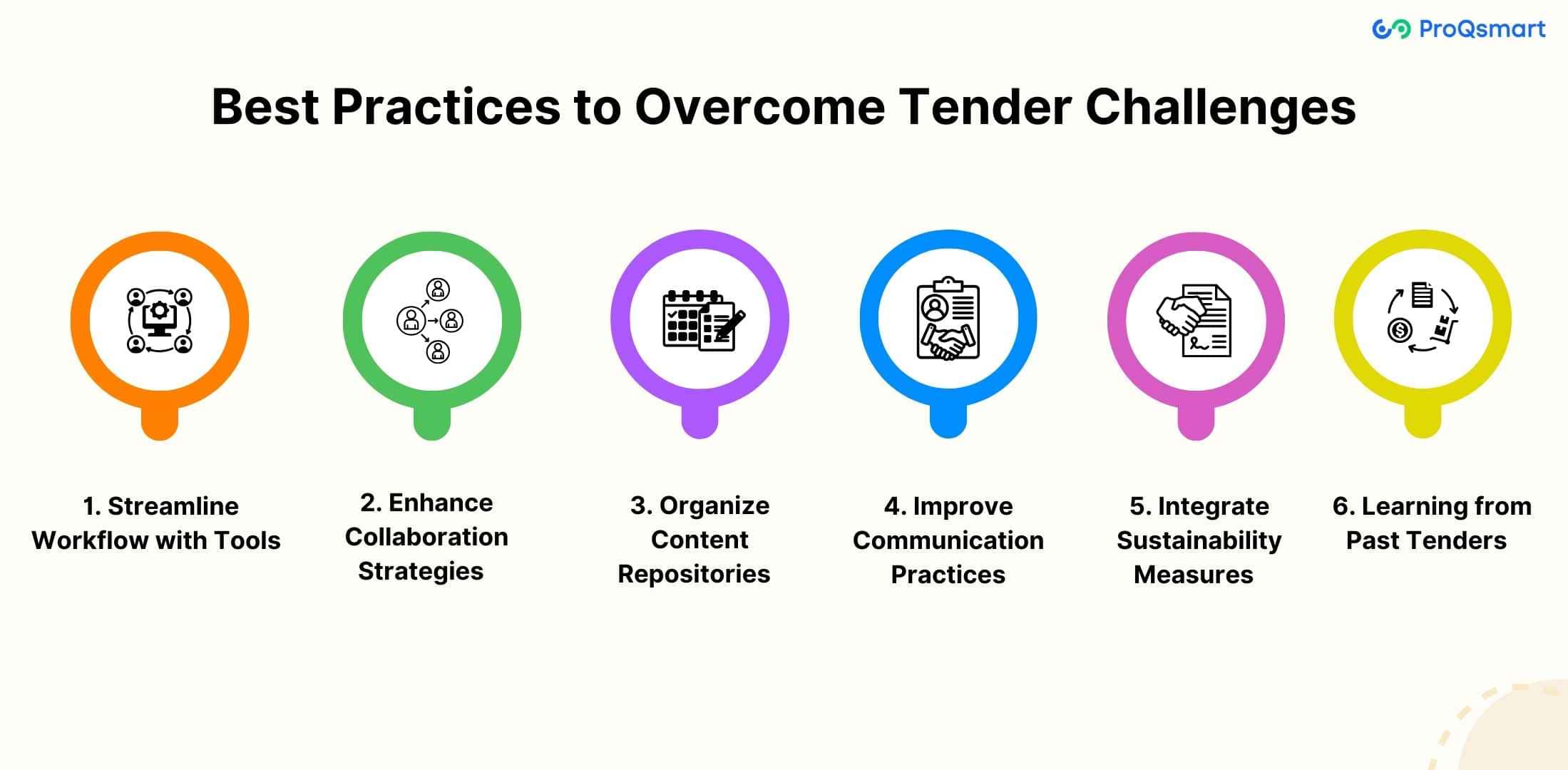
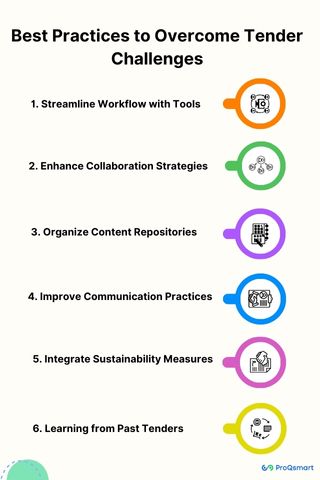
In the procurement landscape, finding solutions for tender challenges is key to winning more bids through effective procurement procedures. Join us as we explore proven strategies to maximize your efficiency and improve your overall tender management process.
1. Streamline Workflow with E-Tendering Software
Implementing E-Tendering softwares like ProQsmart can transform your approach to tender management. Centralizing documentation helps eliminate the noise of a million different files. By doing so, all stakeholders have the ability to easily access the most up-to-date information.
By automating workflows, tenders are completed faster while minimizing human error, providing a streamlined tendering experience. Beyond that, these tools provide you with actionable insights, allowing you to make the data-driven decisions that result in your most competitive bids.
For instance, by evaluating previous tenders, you can spot trends and re-shape your approaches based on that data.
2. Enhance Collaboration Strategies
Partnership is the foundation of winning tender management. Fostering clear communication between cross-functional teams helps to make sure those working on the tender are all on the same page with the bid goals.
By having regular meetings, you can foster a real sense of camaraderie and mission amongst your group. That collaboration fosters creative solutions to tough challenges and produces superior results.
Setting collaborative objectives and unambiguous team member responsibilities are effective ways to both improve team productivity and boost team members’ satisfaction.
3. Organize Content Repositories
An organized central document repository is key to easily find critical documents at the moment’s notice. By organizing and indexing files proactively, you eliminate costly search time and frustration.
A clearly curated repository helps with version control, making sure the most up-to-date documents are in use at all times. This degree of organization makes a big difference in both productivity and accuracy on tender submissions.
4. Improve Communication Practices
Polite, clear, and concise communication with the contracting agency is the best preventive medicine for misunderstandings and painful delays. By implementing standardized communication protocols, you can ensure that all stakeholders are kept informed and engaged throughout the tender process.
By using tools and platforms that focus on digital communication, you can provide real-time updates and corrections, enabling rapid response and clarification. This strategy improves efficiency and fosters trust and builds transparency with partners.
5. Integrate Sustainability Measures
It’s both environmentally responsible and attractive to like-minded partners to integrate sustainability measures into your tendering process. When you showcase your commitment to sustainable practices, you’ll set your bids apart from the competition and bring in organizations that value green initiatives.
Implementing measurable measures, like reducing paper usage or choosing energy-efficient technologies as replacements, is a tangible way to show a commitment to sustainability.
6. Learning from Past Tenders
By learning from the experiences in previous tenders, we can ensure that our future tender processes yield the best possible outcomes. Reviewing past tenders offers an opportunity to determine what was successful and where things need to improve.
That culture of reflective practice leads to the development of progressive best strategies and more effective decision-making. By understanding historical data and trends, procurement teams can refine their approaches, adapt to evolving market conditions, and enhance their tender responses.
Role of AI and Software in Tenders
As we pave the future of procurement, we cannot forget how important technology is, especially when it comes to the tender management process. By knowing the key benefits and features of tender management tools, organizations can streamline and supercharge the procurement process.
Benefits of Tender Management Systems
Tender management systems provide a streamlined tool to manage the complex processes that come with procurement. They offer end-to-end solutions with centralized platforms to manage bids, evaluate suppliers, and enforce compliance with regulatory standards.
With the right technology, whether ERP-linked modules or procurement suites, tender processing can become highly efficient and effortless. You’ll find that you save time and effort on both fronts.
These integrated systems make the tender process much easier. They improve precision, reduce manual mistakes, and introduce strategic sourcing to match your organization’s objectives.
An all-in-one ProQsmart suite powered by AI provides actionable, predictive insights and helps facilitate secure transactions, increasing transparency and operational efficiency.
Features to Look for in E-Tendering Software
When choosing tender management software, keep your procurement requirements in mind and invest in the features that truly matter. Seek solutions that provide integration across the enterprise with current ERP systems such as ProQsmart.
Enhanced features should involve real-time analytics, supplier performance tracking, and data security. An ideal system will let you build customizable workflows and automated notifications to help keep your team on track and in the loop.
Procurement suites have an incredibly strong trump card: all of these procurement activities are brought together in one place. This unique capability removes the reliance on dozens of separate, disparate systems.
How to Use a Tender Management Tool
Knowing that technology can play a critical role in supporting better tender management practices is one thing. Begin with tailoring the technology to fit your unique tendering workflows.
Use its supplier database and bidding system to help you collect and analyze supplier data to ensure you’re making informed decisions. Use these tools to masterfully track and monitor tender offers.
Particularly those that have a legal/financial impact, such as SEC disclosures for bids above 5%. Show off your experience by featuring success stories of projects the system has helped move forward, proving its effectiveness in the real world.
Conclusion
Tendering is more than just a step in the procurement process—it’s a strategic driver of success. It brings together diverse stakeholders, each playing a vital role in achieving the best outcomes. By understanding the tender process thoroughly, businesses can identify the right partners, create lasting value, and build stronger supplier relationships.
While challenges in tender management are inevitable, they can be effectively addressed with the right tools and strategies. Technology, in particular, is transforming tendering, making it faster, more efficient, and less resource-intensive. When implemented correctly, these solutions not only streamline operations but also enhance transparency and decision-making.
To stay ahead in today’s competitive landscape, it’s essential to embrace these best practices and leverage technology to its fullest potential. By doing so, you can turn tendering into a smooth, efficient, and profitable part of your business strategy.
Ready to revolutionize your tender process? ProQsmart offers the tools and features you need to streamline procurement, improve supplier relationships, and drive better outcomes. Book a demo today to see how ProQsmart can transform your tendering process and help you achieve your goals.

